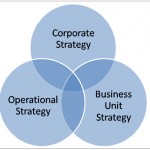Leadership models within organizations

The term leadership has two meanings in organizational contexts: the activity of leadership practice and the process of influencing and guiding people through non-coercive methods in order for them to carry out job-related activities.
Leadership is a key element of organizational culture. It is a concept which relates to an individual’s ability to motivate, influence and optimize a working team. In his research paper “Concepts of strategic management”, Lloyd Byars defines organizational leadership as the ability to influence attitudes and opinions with the purpose of obtaining a coordinated effort from a group of employees. In this regard, the purpose of leadership is to create a general framework that can provide a direction for strategy planning. This particular way of thinking implies that employees have good knowledge of the organization’s performance standards.
According to Lloyd Byars’s theory, organizational leadership is manifested in three dimensions:
- a) individual perception of the appropriate organizational strategy
- b) individual perception of the current organizational strategy
- c) individual perception of what needs to be done
By demonstrating that one has the aforementioned leadership skills, these three aspects need to be balanced at the individual level, so each employee will have a positive perception of the company.

The concept of organizational leadership can also be defined through the following models:
- The theory of dyadic relationships
Formulated by Danser, Graen and Hague, it was originally called the Vertical Dyad Linkage Theory (VDL), as can be found in the Encyclopedia of Group Processes and Intergroup Relations, and was later named Leader Exchange Model (LMX). The theory postulates that individuals act differently in group situations than when separated. The theory states that effective leadership depends to a large extent on the type of interaction between manager and subordinate.
The following aspects should be remembered as being the main ideas of the theory of dyadic vertical links:
1) Managers identify members of the working group who are committed to team goals and to the entire organization with a high degree of autonomy.
2) Identification of the individuals who form the “in-group” (those who have a greater degree of freedom of movement than the rest of the employees) and those who form the “out-group” (employees with which managers keep a formal status).
3) Next to the manager, the in-group’s members represent a vertical dyad
4) The working group members, possessing a high capacity to form interpersonal relationships at work are more likely to obtain leading positions.

- The theory of transactional management
Numerous authors have contributed to its meaning across time, such as Max Weber, Edwin Hollander, James Burns, Bernard Bass, Robert House and Richard Steers.
In Hollander’s vision, leadership is defined as a process that involves a social exchange (transaction) between managers and subordinates. The variables that define the concept of leadership are the following: leaders (that possess specific characteristics and abilities needed for their role), subordinates (according to their skills and personality traits) and situations (tasks reported to available resources).
The concept of transaction is aimed at defining the social exchange theory between managers and subordinates. The overall look promoted by the authors mentioned above is to highlight the importance of transactions between members of the company occupying a different hierarchical status. In the conception of Burns, types of exchange that can take place between managers and subordinates are economic, political and psychological.
To sum this up, transactional leadership theory is only partially applicable, being dependent on the multitude of features that define the organizational culture of a certain company.
Leadership is not necessarily a feature specific to managers. Any member of a company may influence his co-workers to improve their performance and can be considered a leader, whether he influences the person right next to him, those working at the same floor or in the entire building. But at the end of the day, most often than not, managers are the ones that need to put on the shoes of the leader, which is an indispensable ability when it comes to managing a group, regardless of its size.
Image source:

Tags: Individual Performance, Leadership, Management performance





